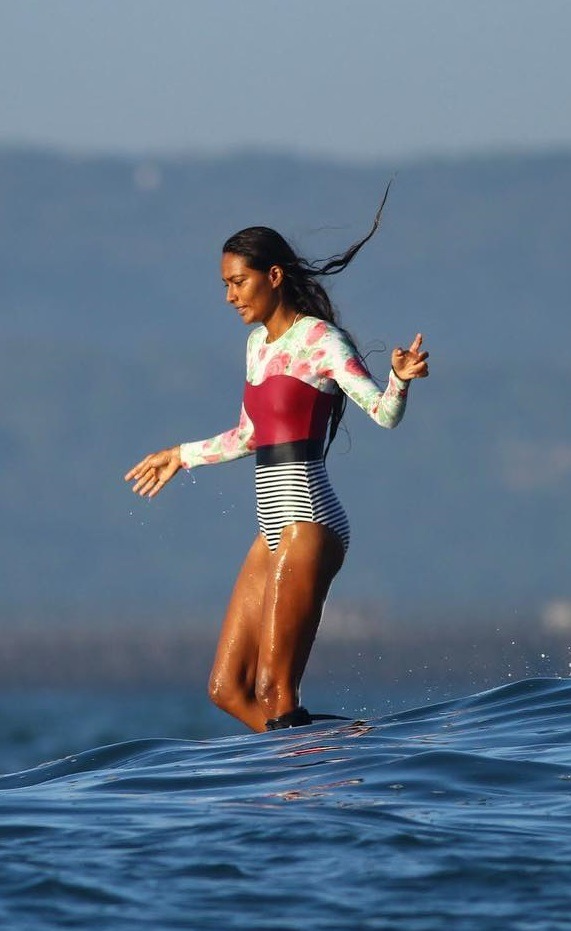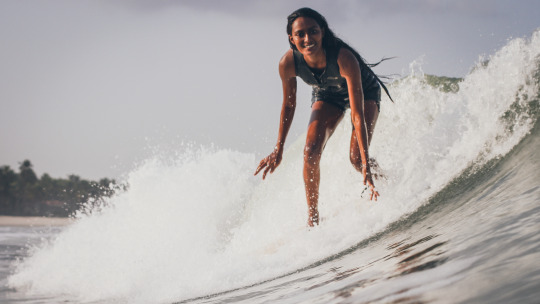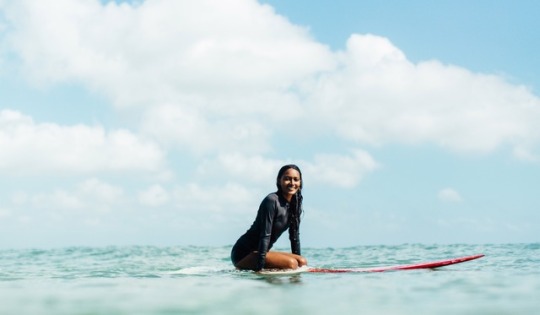#ishita malaviya
Text

4 notes
·
View notes
Video
Ishita Malaviya, India's first professional female surfer and one of the early pioneers of the sport in her country, remembers googling "surfing in India" back in 2007, only for nothing to show up. More about her at Thesurfslab.com
26 notes
·
View notes
Text
India is discovering surfing — and the plastic 'gifts' that the sea is carrying
India is discovering surfing — and the plastic ‘gifts’ that the sea is carrying
When Tushar Pathiyan and Ishita Malaviya moved to Manipal on India’s west coast in the mid-2000s, neither knew their lives were about to take a left turn.
Tushar was studying architecture and Ishita journalism at Manipal University when they discovered the Surfing Swamis.
India’s first surf school had been co-founded in 2004 by the original Surfing Swami, American Jack Hebner, down the coast from…
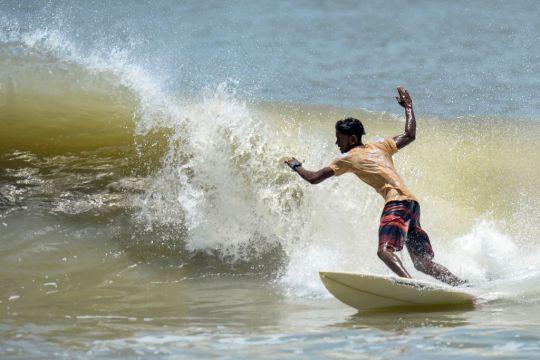
View On WordPress
0 notes
Photo

How a surfing revolution is riding the wave in India

Murthy Meghavan is a former fisherman who is now a surfing instructor at Covelong Beach in Kovalam, a coastal village 40km from the southern Indian city of Chennai.
He had been riding the waves before he even knew it was an actual sport but had never aspired to surf professionally. As a child, he used an old wooden plank that had washed ashore, once a part of someone’s door, as a makeshift surfboard.
In 2007, a 20-minute chat with Jack Hebner, hailed by locals as the “surfing swami” for his passion for yoga, Hinduism and surfing, changed Meghavan’s life.
In 2004, Hebner had established India’s first surfing school, the Mantra Surf Club in Mangaluru. Fascinated by Hebner’s carbon-fibre board, Meghavan mustered up enough courage to ask him if he could borrow it.
“When I went surfing with it, it felt like I was floating on a cloud,” 47-year-old Meghavan, who now runs his own surfing school at Kovalam, told Al Jazeera.
Many of the students he teaches are children of fisherfolk from low-income families.
Sekar Pachai, 29, is another fisherman-turned-professional-surfer from the same village who has won several championships at home and abroad.
When Pachai first began surfing, corporate sponsors made it possible for him to turn pro, he says, adding that it is very difficult for someone from an underprivileged background to make it as a competitive surfer without support.
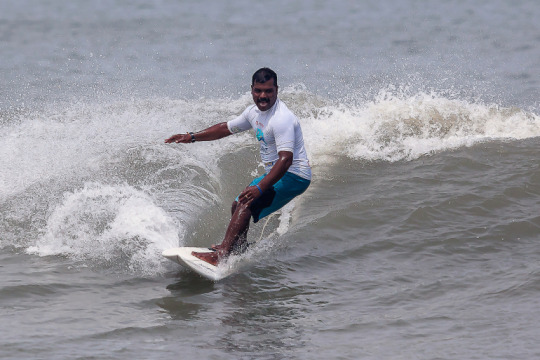
Despite the country’s 7,000km of coastline, not all beaches provide the ideal conditions to surf
Finding a decent surfboard is often the first obstacle. A foam or fibreglass board for beginners can cost between $150 and $1,000. A professional board can cost upwards of $1,500.
Even if you could afford it, surfboards were stocked in India’s sporting goods stores only in the last five years. Prior to this, a good board was more likely to find its way via foreigners.
In 2003, an Australian surfer gifted a battered board to a child in Meghavan’s village.
When Meghavan realised the kid did not care for it much, Meghavan paid him 1,500 Indian rupees ($31.4 at the time) to buy it from him. But he did not have an ankle leash so he used his fishing rope which alarmingly wound itself around his neck whenever he fell.
President of the Surfing Federation of India (SFI), Arun Vasu, feels regular financial support for the sport would help carve its future trajectory in India as it is funded by private donors and corporate sponsors only.
Despite the country’s 7,000km (4,350 miles) of coastline, not all beaches provide the ideal conditions to surf. The lack of sponsorship also affect surfers in restricting travel for training under different wave conditions.
“To be on par with a global surfing community, Indians need training in all-wave conditions and to travel in the global surfing circuit,” said Vasu. “Without adequate funding, this won’t happen.”
Even within the country, travel expenses can mount.
Surfers must practise in the few beaches where encountering bigger waves is possible – Mahabalipuram and Kovalam in Tamil Nadu, Varkala in Kerala, Mulki and Gokarna in Karnataka, coastal Pondicherry and Goa.
These waves are seasonal – between May and September – and even during the peak season, these beaches do not offer as wild a wave as you can encounter in Playa Grande in Costa Rica, Jeffreys Bay, South Africa, Bell’s Beach in Australia, Uluwatu in Bali, or Huntington Beach in California.
The surfing community in India is small and tends to be spread out over the country.
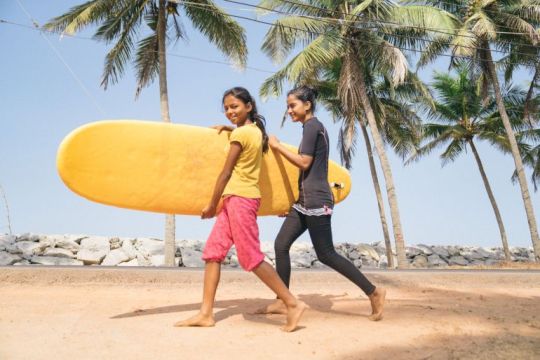
Very few women – the SFI estimates their number is at eight to 10 across the country – have taken up the sport
Surfing festivals are held in Kovalam, Mangaluru and Orissa, drawing attention to the sport, attracting sponsors and helping professional surfers meet and compare notes.
India has an estimated 40 surfing schools. Vasu estimates that there are only 100 to 120 professional surfers. The others are enthusiasts who love the waters, take occasional lessons and who enjoy surfing for leisure.
Srikanth Dhanashekar, 16, is a son of a fisherman in Kovalam.
His day starts at 7am with a gruelling training schedule that lasts four hours. But he does not mind the aches and pains.
“Surfing gives me such joy,” said Dhanashekar. “I feel one with the sky and the sea. I can’t imagine my day without it and my dream is to represent India in the Olympics someday.”
While diverse athletes from fishing communities are finding their footing in the sport, there is one area in which it continues to lack representation: gender.
Very few women – the SFI estimates their number is at eight to 10 across the country – have taken up the sport.
Even those who do surf confront many difficulties and prejudices head on.
Ishita Malaviya, 32, began surfing in 2007, becoming the first professional female surfer in the country.
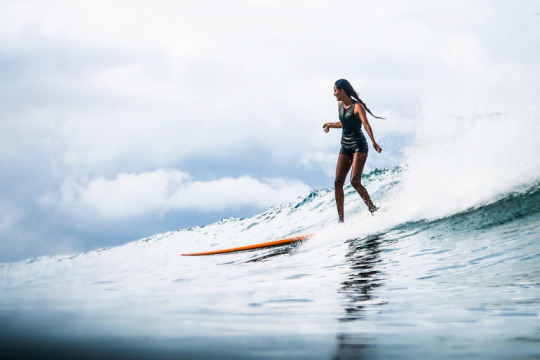
Ishita Malaviya, India’s first female professional surfer
When she started competing, her goal was to represent women at events. While still in college, she and a friend would surf on weekends, boarding a bus at 5am, lugging an eight-foot second-hand surfboard to the beach in Manipal, in the southern Indian state of Karnataka.
“The board took up the combined backrest of eight seats on the bus. People would have to lean on it while sitting,” said Malaviya.
Curious and amused, other passengers would ask her questions about surfing, so at least it sparked conversations.
Sinchana Gowda, 20, crossed over to surfing from professional swimming and has been winning national awards since the age of 13.
But intrusive questions about the way she dresses when surfing in a wetsuit or shorts have been much harder for her, she says.
India’s first surfer girl Ishita Malaviya cuts through waves uncaring of her darkening skin or stereotypes, truly going against the flow! pic.twitter.com/HEzxRGXFfA
— oomna (@oomnawhodares) October 24, 2017
Suhasini Damian, 29, from Auroville in Pondicherry, is a national award-winning surfer coached by her husband, a surf instructor who shaped her red and pink board for her, customising it to her body weight for easy manoeuvrability.
Strangers have walked up to her to tell her that if she spends too much time in the sun, her skin would tan beyond recognition.
She has never felt comfortable surfing alone because she has had to contend with drunken men, lewd comments, catcalls and whistles.
India’s lack of a beach culture meant that female surfers were often singled out, says Malaviya.
But she hopes that will change as more women discover the joys of surfing.
“I’ve found my surfing family but I’m still striving for a surfing sisterhood,” said Malaviya.
The family Malaviya refers to are fishermen and their children, who, in 2012, helped her and a business partner set up a surfing club near Udipi, Karnataka, transforming a dilapidated abandoned home into a warm, inviting resort.
“Surfing dissolved all our barriers as they welcomed us – strangers – into their community. It reminds me of how in front of a mighty ocean, we are all equals.”

India’s lack of a beach culture meant that female surfers were often singled out, said Malaviya
Read full article: https://expatimes.com/?p=19278&feed_id=38759
1 note
·
View note
Photo
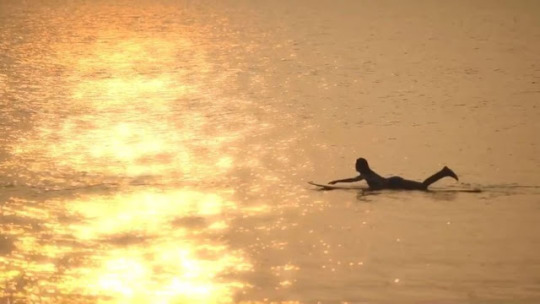
Ishita Malaviya on “Sunset Slides”.
Watch video: http://www.thesurfslab.com/2017/11/sunset-slides.html
12 notes
·
View notes
Photo

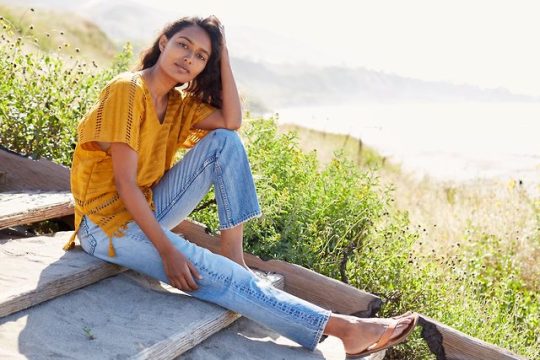


Wax + Cruz SS19 feat. beautiful Ishita Malaviya, India's *first* lady surfer! So happy we could connect with Ishita while she was in California - finding time in her busy schedule for a quick morning shoot (in Malibu) the day before her departure home to India. These artisan handwoven textiles are designed by my wife! See more of this collection: https://www.waxandcruz.com
0 notes
Video
Celebrating powerful women like @surfishita on International Womens' Day! Not easy being a female surfer...add "in India" on top of that. Ishita Malaviya (running with the red top) is helping to pave the way. Can't wait to meet up with her next month at the @theshakasurfclub to surf and do some rice giving. We're doing all we can to provide good jobs to women in India. 📽@nikewomen #dadadding #internationalwomensday (at India)
0 notes
Photo

Surfing India / India
218 notes
·
View notes
Photo

Meet Ishita Malaviya, India’s first female surfer
“I wasn’t doing it to be a role model, I wasn’t thinking about breaking barriers,” says Ishita, reflecting on the years passed since then. “I just enjoyed it.” Now a sponsored athlete and running her own surf school with Tushar, she’s frequently in the international spotlight for challenging the traditional path expected of Indian women – consisting of education, marriage, pregnancy – and choosing the road less travelled. She stands out, literally, with a deeply tanned complexion in a country where “everyone glorifies fair skin”. Refusing to be offended by the criticism levelled at her, she laughs at it. “Surfing saved me,” she says. “It changed our lives completely.”
(Huck)
1K notes
·
View notes

